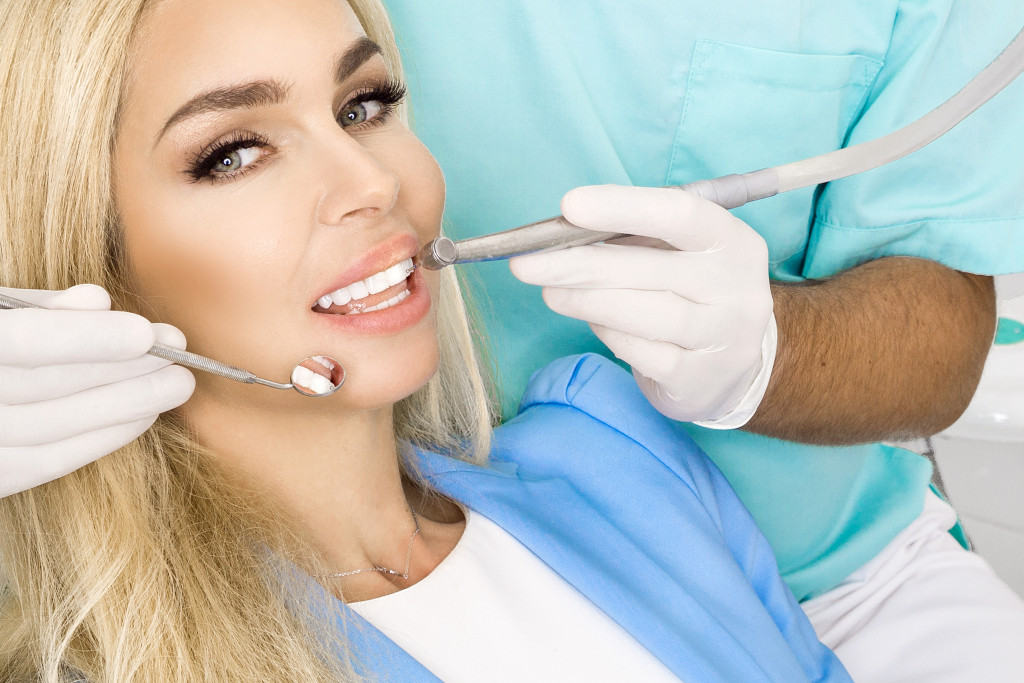From yellowing teeth to bleeding gums, there are a variety of dental issues that can plague both adults and children alike. In this blog post, you’ll take a comprehensive look at some of the most common dental problems and how to treat them.
Yellow Teeth
Yellowing teeth are often due to staining from tobacco products, coffee, tea, or red wine. Many at-home whitening treatments are available, but it’s best to consult your dentist first, as some of these treatments can damage your enamel if used too often.
Cracked Teeth
A crack in your tooth can occur due to biting down on hard objects or trauma to the mouth area. Rinse your mouth with warm water and apply a cold compress to the outside of your mouth to reduce swelling. Take ibuprofen for pain relief if needed but avoid using aspirin directly on the gums as it may cause further irritation. See your dentist immediately, as a crack in your tooth puts you at risk for infection and further damage to the tooth structure.
Missing Teeth
According to the American Dental Association, about 120 million Americans are missing at least one tooth, and 36 million have no teeth. This makes missing teeth one of the most common dental issues in the country. While there are several possible causes of tooth loss, including gum disease and injury, the most common cause is simply aging. As you age, your teeth become weaker and more susceptible to decay.
Fortunately, even if you are missing all of your teeth, treatment options can help you regain a healthy and complete smile. All-on-4 dental implants are one such option. This treatment involves placing four implants in the jawbone and attaching a complete set of replacement teeth to them. With all-on-4 implants, you can enjoy the look and feel of natural teeth while regaining the ability to eat all your favorite foods.
Toothache
A toothache is usually a sign of an infection or other issue with the tooth. Rinse your mouth with warm water and floss around the affected tooth to remove any food particles that may be causing irritation. If the pain persists, over-the-counter painkillers can help. However, if the pain is severe, you should see a dentist as soon as possible, as you may need antibiotics.

Tooth Decay
Tooth decay is one of the most common dental issues. It occurs when bacteria in the mouth form plaque, a sticky film that coats the teeth. The plaque then hardens into tartar, which a professional cleaning can only remove. If not removed, the tartar will continue to damage the tooth enamel, causing cavities. The best way to prevent tooth decay is to brush regularly, floss daily, and visit the dentist for regular cleanings and checkups.
If you do develop cavities, they can be treated with fillings. The type of filling used will depend on the size and location of the cavity, as well as your personal preference. The three most common types of fillings are amalgam (silver), resin (tooth-colored), and gold.
Amalgam fillings are strong and durable but are also noticeable. Resin fillings are less noticeable but may not be as strong as amalgam fillings. Likewise, gold fillings are strong and durable but are more expensive than other fillings.
Bad Breath
There are many potential causes of bad breath, from not brushing your teeth to eating certain foods. To combat bad breath, brush your teeth at least twice a day and floss daily. You can also use mouthwash to kill bacteria in your mouth. If you have persistent bad breath, it could be a sign of gum disease, so see your dentist for an evaluation.
Gum Disease
Gum disease is an infection of the gums that can result in red, swollen, and bleeding gums. It is often caused by plaque and tartar on the teeth. Gum disease can be prevented by brushing and flossing regularly and seeing your dentist for regular cleanings. Your dentist may recommend deep cleaning or surgery if you already have gum disease.
Gingivitis
Gingivitis is a gum disease, an inflammation of the gums that can lead to periodontitis, a more severe inflammation of the tissues that support the teeth. Gingivitis is caused by a buildup of plaque on the teeth. Symptoms include red or swollen gums, bleeding gums, bad breath, or tenderness in the gums when brushing.
Gingivitis is reversible with good oral hygiene habits, such as brushing twice a day, flossing daily, and visiting the dentist for regular cleanings. However, if left untreated, gingivitis can progress to periodontitis.
Treatment for gingivitis typically involves a deep cleaning procedure that removes plaque buildup from the tooth roots. This treatment is usually done by a dentist or periodontist. If you are diagnosed with gingivitis, it’s essential to stick to your oral hygiene routine to prevent it from progressing.
These are some of the dental issues that people can experience. Although good oral hygiene habits at home are essential for preventing these problems, they aren’t always enough. That’s why you must visit your dentist regularly for cleanings and checkups. If you experience any dental problems, several treatment options are available depending on the issue, so talk to your dental provider to see what is best for you.




